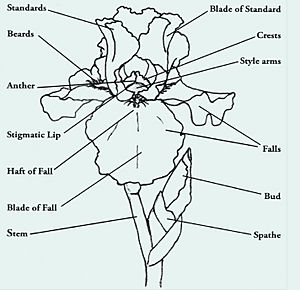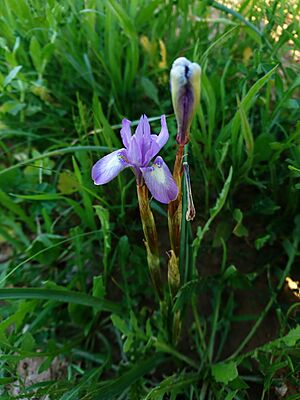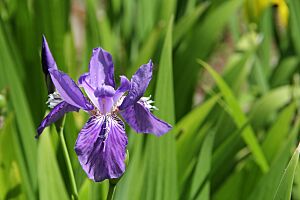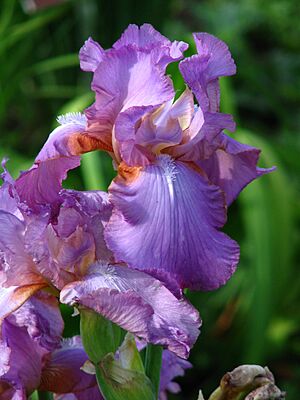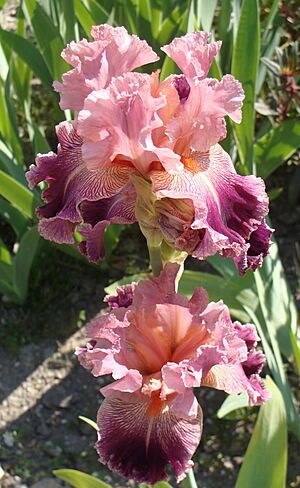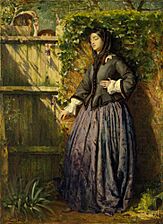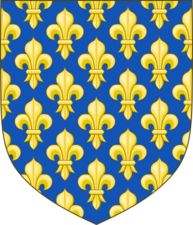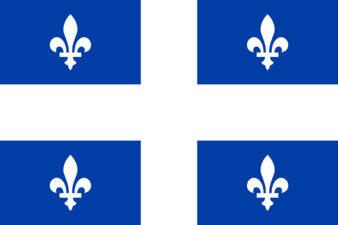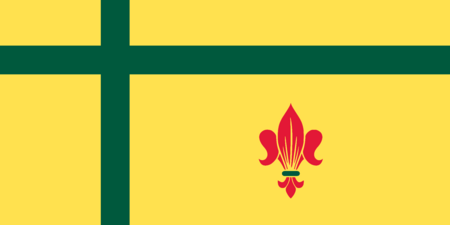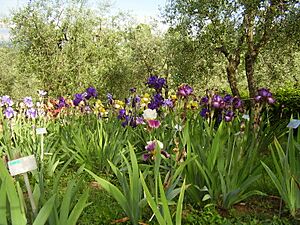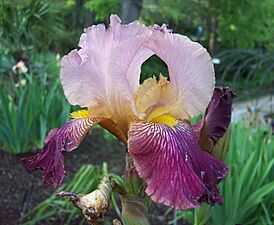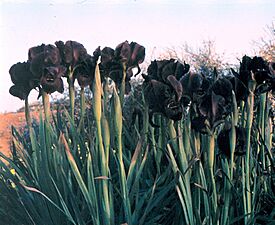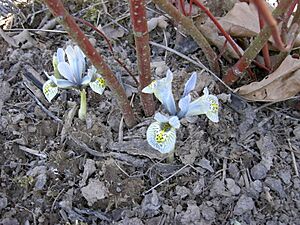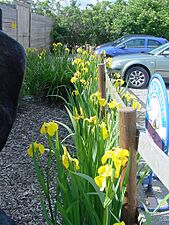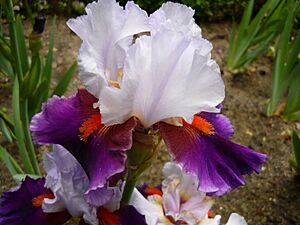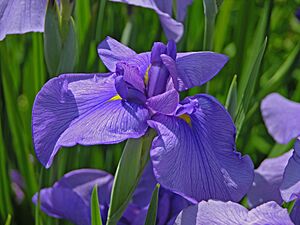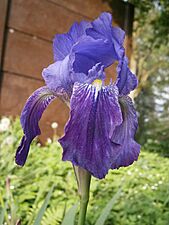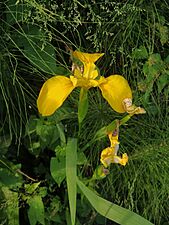Iris (plant) facts for kids
Quick facts for kids Iris (plant) |
|
|---|---|
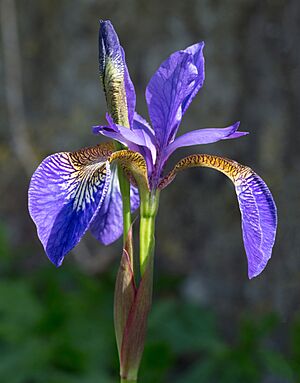 |
|
| Iris sibirica | |
| Scientific classification |
|
| Kingdom: | Plantae |
| Clade: | Tracheophytes |
| Clade: | Angiosperms |
| Clade: | Monocots |
| Order: | Asparagales |
| Family: | Iridaceae |
| Subfamily: | Iridoideae |
| Tribe: | Irideae |
| Genus: | Iris Tourn. ex L. |
| Type species | |
| Iris germanica L.
|
|
| Subgenera | |
|
Hermodactyloides |
|
| Synonyms | |
|
Belamcanda |
|
The Iris is a type of flowering plant known for its beautiful, showy flowers. There are about 310 different kinds, or species, of Iris plants. The name "iris" is used for all these species. Some people also call them "flags." The plants in the Scorpiris group are often called "junos." Irises are very popular flowers to grow in gardens.
Some plants that used to be in their own groups, like the blackberry lily (I. domestica) and snake's head iris (I. tuberosa), are now part of the Iris family.
Scientists like Ronald Fisher have used three types of Iris in studies to help understand how to classify plants.
Contents
- What Irises Look Like
- Where the Name "Iris" Comes From
- How Irises are Classified
- Where Irises Grow
- Iris Diseases
- Growing Irises
- How Irises are Used
- Irises in Culture
- Gallery
- See also
What Irises Look Like

Irises are perennial plants, which means they live for more than two years. They grow from thick underground stems called rhizomes, or from bulbs, especially in dry places.
Their stems are long and stand straight up. They can be simple or branched. Irises that grow from rhizomes usually have 3 to 10 sword-shaped leaves that grow in thick bunches. Bulb-growing irises have 2 to 10 narrow leaves.
Iris Flower Parts
Iris flowers often grow in a fan shape. Each flower has six parts that look like petals. These parts grow on a stem called a pedicel.
The three lower parts, which often spread out or hang down, are called "falls." They have a narrow base and then widen out. Some rhizome irises have a fuzzy "beard" in the middle of the falls. This beard helps guide insects to the flower's nectar.
The three upper parts stand upright and are called "standards." In most irises, the falls and standards look quite different. All six parts join together at their base to form a tube above the ovary, which holds the seeds. The flower's styles also divide into petal-like branches, which are important for pollination.
The iris flower is designed to help insects pollinate it. When an insect lands on the falls to find nectar, it first touches the part of the flower that receives pollen. As the insect leaves, it picks up pollen without dropping it on the same flower. This way, the pollen from one flower can be carried to another.
After the flower blooms, it forms a fruit called a capsule. This capsule opens in three parts to show many seeds inside. Some iris seeds have a small, fleshy attachment called an aril.
Where the Name "Iris" Comes From
The name Iris comes from the Greek word îris, which means "rainbow." It is also the name of the Greek goddess of the rainbow, Iris. Some people think the plant was named this because iris flowers come in so many different colors.
How Irises are Classified
Iris is the largest group of plants in the family Iridaceae. It has about 300 to 310 accepted species. Many of these are natural hybrids, meaning they are a mix of two different species.
Scientists have divided irises into smaller groups to make them easier to study. These groups are called subgenera, and there are six main ones. Five of these subgenera are found in the Old World (Europe, Asia, Africa), and one (Limniris) is found all over the Holarctic region (Northern Hemisphere).
Main Iris Groups (Subgenera)
- Iris (These are bearded irises with rhizomes)
- Limniris (These are beardless irises with rhizomes)
- Xiphium (These are bulbous irises with smooth bulbs)
- Nepalensis (These are bulbous irises)
- Scorpiris (These are bulbous irises with smooth bulbs, often called junos)
- Hermodactyloides (These are bulbous irises with netted bulbs)
Where Irises Grow
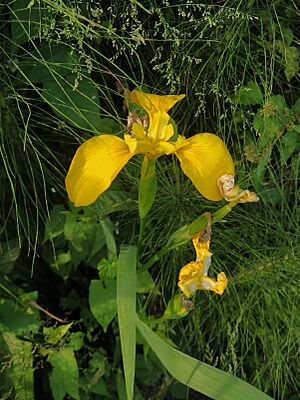
Most iris species grow in the temperate parts of the Northern Hemisphere, from Europe to Asia and across North America. They can live in many different places, but they mostly prefer dry, semi-desert, or cold rocky mountain areas. You can also find them on grassy slopes, in meadows, woodlands, bogs, and along riverbanks. Some irises, like Iris setosa, can grow in both wet and dry places.
Iris Diseases
Irises can get plant diseases. For example, the Narcissus mosaic virus and Japanese iris necrotic ring virus can infect them. Scientists have studied these viruses to understand how they affect irises in different parts of the world.
Growing Irises
Irises are very popular ornamental plants grown in home gardens and botanical gardens. Places like the Presby Memorial Iris Gardens in New Jersey have over 10,000 iris plants. In Europe, the Giardino dell'Iris in Florence, Italy hosts a famous iris competition every year. Irises are also often seen in flower shows like the Chelsea Flower Show.
When growing irises, they are usually grouped as either bulb irises or rhizome irises. Because irises come from many different places, their growing needs can vary a lot.
Generally, irises grow well in most garden soils as long as the soil drains well. Some species, like I. reticulata, bloom very early in the year, sometimes as early as February or March. Later, in May or June, many of the tall bearded irises start to bloom.
The British Iris Society promotes irises in the United Kingdom. The American Iris Society keeps track of over 30,000 different registered iris types, called cultivars.
Bearded Rhizome Irises
Bearded irises are divided into dwarf, tall, or aril types. The most common garden iris in Europe is a hybrid, often called the German iris. Most modern bearded irises come from wild forms of the Sweet iris (I. pallida) and the Hungarian iris (I. variegata).
The "beard" is a row of short, fuzzy hairs on the lower petals. It helps guide pollinating insects to the flower's reproductive parts. Over time, bearded irises have been bred to have much larger flowers.
Bearded irises are easy to grow and spread, making them very popular in gardens. You can buy them as bare roots in late summer. They should be planted in a sunny spot with the rhizome (underground stem) showing slightly above the soil. They need to be divided every two or three years when they get too crowded.
It's very hard to create a truly red bearded iris, like a truly blue rose. Most irises are in the purple and blue colors, but yellow, pink, orange, and white types are also available. This is because irises naturally produce blue-based colors, not red-based ones.
Award-Winning Bearded Irises
Here are some bearded irises that have won the Royal Horticultural Society's Award of Garden Merit for being excellent garden plants:
- 'Alizes' (tall bearded, blue & white)
- 'Bumblebee Deelite' (miniature tall bearded, yellow/purple)
- 'Early Light' (tall bearded, pale yellow)
- 'Jane Phillips' (tall bearded, pale blue)
- 'Langport Wren' (intermediate bearded, maroon)
- 'Maui Moonlight' (intermediate bearded, pale yellow)
- 'Orinoco Flow' (border bearded, white/violet)
- 'Raspberry Blush' (intermediate bearded, pink)
- 'Sarah Taylor' (dwarf bearded, pale yellow)
- 'Thornbird' (tall bearded, pale yellow)
- 'Titan's Glory' (tall bearded, deep blue)
Bearded Iris Oncocyclus Section
This group includes the cushion irises, known for their large, strongly marked flowers. They often have narrow, sickle-shaped leaves and usually only one flower per stem. These irises can be tricky to grow. They need to be planted shallowly in very gritty, well-drained soil. Their roots should be protected from heavy rains in winter.
Bearded Iris Regelia Section
This group is similar to the cushion irises. They are best planted in September or October in warm, sunny spots. Their rhizomes should be lifted in July after the leaves have died back.
Beardless Rhizome Irises (Subgenus Limniris)
There are six main types of beardless irises, depending on where they come from. These include Pacific Coast, Siberica, Spuria, Louisiana, and Japanese irises.
Common beardless irises in European gardens are the Siberian iris (I. sibirica) and the Japanese Iris (I. ensata). The term "Japanese iris" can also refer to the blood iris (I. sanguinea) and the rabbit-ear iris (I. laevigata). I. unguicularis is a species from Algeria that flowers in late winter. In North America, Louisiana irises are often grown.
Crested Rhizome Irises (Subgenus Limniris)
One special species in this group is Iris cristata from North America.
Bulbing Juno Irises (Subgenus Scorpiris)
These irises, often called 'junos', are popular bulb irises. They are usually among the first to bloom.
Bulbing European Irises (Subgenus Xiphium)
This group includes irises from Europe, often called Dutch, English, or Spanish irises.
- Iris reticulata and Iris persica are fragrant and popular with florists.
- Iris xiphium, the Spanish Iris, and Iris latifolia, the English Iris, are both from Spain despite their names. They have very showy flowers and are popular with gardeners and florists. They are also quite hardy and can grow in northern Europe. They need well-drained, light soil in a sheltered, sunny spot.
Bulbing Reticulate Irises (Subgenus Hermodactyloides)
Reticulate irises, with their unique bulbs, include the yellow I. danfordiae and various blue-purple types like I. histrioides and I. reticulata. These miniature irises bloom very early, often in February and March, making them popular spring bulbs. They need well-drained soil in a sunny spot and should be protected from too much moisture in winter.
How Irises are Used
Fragrant Rhizomes

The rhizomes of the German iris and sweet iris are known as orris root. They are used to make perfume and were once used in medicine. Today, the essential oil from iris flowers is sometimes used in aromatherapy to help people relax. Dried rhizomes are also given to babies to chew on when they are teething. Some Gin brands use orris root for flavor and color.
To make orris root, iris rhizomes are harvested, dried, and aged for up to 5 years. During this time, they develop many fragrant compounds that smell like violets. This aged root is then used to make "iris butter" or orris oil for perfumes.
Iris rhizomes can be toxic if eaten in large amounts. The Larger blue flag (I. versicolor) and other garden irises contain a toxic substance called iridin. Eating these rhizomes can cause upset stomach or skin irritation, but it's usually not deadly. It's important to only use irises for medicine under the guidance of an expert.
Water Cleaning
The yellow iris (I. pseudacorus) is often used to help clean water. Its roots are planted in special beds, and they help improve water quality by taking in harmful nutrients, like those from farm runoff. However, this plant grows very quickly and can sometimes block natural waterways, so it's considered a problem plant in some places.
Irises in Culture
The iris has been used in art and as a symbol for a long time, including in heraldry (symbols used by families or countries). Its meaning has changed over time, from a symbol of Mary in Christianity to the French royal symbol, the fleur-de-lis.
Art
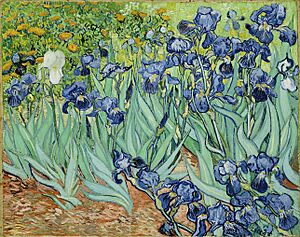
The famous artist Vincent van Gogh painted several well-known pictures of irises.
The American artist Joseph Mason painted a very detailed image of the Louisiana flag or copper iris (Iris fulva). Another artist, Philip Hermogenes Calderon, included an iris in his 1856 painting Broken Vows. The iris in art can symbolize warnings, lost love, or silent sadness.
A modern artist named George Gessert has focused on breeding irises as a form of art.
Local Irises as Symbols
- Iris nigricans, the black iris, is the national flower of Jordan.
- Iris bismarckiana, the Nazareth Iris, is the symbol of the city of Upper Nazareth.
- The Iris croatica is the unofficial national flower of Croatia.
- A stylized yellow iris is the symbol of Brussels, Belgium. It is now on the flag of the Brussels-Capital Region.
- In 1998, Iris lacustris, the Dwarf Lake iris, became the state wildflower of Michigan, USA.
- In 1990, the Louisiana iris was voted the state wildflower of Louisiana, USA.
- An iris (species not specified) is one of the state flowers of Tennessee, USA. It is generally thought to be the Iris versicolor, the Purple Iris.
- The Iris versicolor is also the provincial flower of Quebec, Canada. The provincial flag of Québec shows this iris.
China
In China, people believe that Iris anguifuga can keep snakes out of gardens. It grows in winter, keeping snakes away, then rests in spring, allowing snakes back. In autumn, it grows again, stopping the snakes once more.
Ancient Greece
In ancient Greek stories, the goddess Persephone was gathering flowers like roses, crocuses, violets, and irises before she was taken by the god Hades. Some think the 'agallis' flower mentioned in these stories was a type of dwarf iris.
Muslim Culture
In Iran and Kashmir, Iris kashmiriana and Iris germanica are often planted in Muslim graveyards.
Fleur-de-lis and Symbols
The fleur-de-lis is a stylized iris flower. It became a symbol of France when King Clovis I adopted it in the 12th century. The yellow fleur-de-lis often represents the yellow iris (I. pseudacorus), which is common in Western Europe. You can see the fleur-de-lis on the Quebec flag, the logo of the New Orleans Saints football team, and the flag of Saint Louis, Missouri.
The red fleur-de-lis on the coat-of-arms and flag of Florence, Italy, comes from the white iris that grew in Florence. The Medici family later changed the colors to red with a white iris to show a change in power.
Scouting and Fraternities
The fleur-de-lis is a common symbol for Scouting. It is also used by the sorority Kappa Kappa Gamma and is the official flower of Kappa Pi International Honorary Art Fraternity.
Other Meanings
The Iris is one of the flowers listed as the birth flower for February.
Gallery
-
Early coat-of-arms of the House of Capet (France ancient)
-
Iris kemaonensis in Himalaya
-
Iris pseudacorus in Cheshire, England, United Kingdom
-
Iris 'Sharpshooter' in the Real Jardín Botánico de Madrid, Spain
-
Wild Iris in Mazandaran, Iran
See also
 In Spanish: Iris (planta) para niños
In Spanish: Iris (planta) para niños
- American Iris Society
- Banshu Yamasaki Iris Garden


